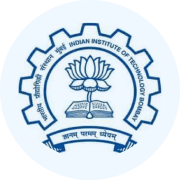GATE Exam > GATE Questions > A cricket player is fast chasing a ball in th...
Start Learning for Free
A cricket player is fast chasing a ball in the field. Which one of the following groups of bones are directly contributing in this movement?
- a)Femur, malleus, tibia, metatarsals
- b)Pelvis, ulna, patella, tarsals
- c)Sternum, femur, tibia, fibula
- d)Tarsals, femur, metatarsals, tibia
Correct answer is option 'D'. Can you explain this answer?
Most Upvoted Answer
A cricket player is fast chasing a ball in the field. Which one of the...
Trasals, femur, metatarsals and tibia are bones of the legs which are involved in running during chasing the ball by a cricket player.
Free Test
FREE
| Start Free Test |
Community Answer
A cricket player is fast chasing a ball in the field. Which one of the...
Introduction:
In the sport of cricket, players often have to chase a ball in the field to prevent the opposing team from scoring runs. This requires quick and agile movements, which are facilitated by the skeletal system. The bones directly involved in this movement are responsible for providing stability, support, and locomotion.
Explanation:
The correct answer is option 'D', which includes the bones tarsals, femur, metatarsals, and tibia. Let's understand why these bones directly contribute to the movement of the cricket player.
Tarsals:
Tarsals are a group of seven bones located in the ankle region. These bones provide stability and support to the foot, allowing for balance and weight distribution during movement. They play a crucial role in maintaining proper foot alignment while running and chasing the ball.
Femur:
The femur is the thigh bone, which is the longest and strongest bone in the human body. It connects the hip joint to the knee joint and plays a significant role in the movement of the lower limb. During the chase, the femur aids in extending and flexing the leg, providing the necessary power and range of motion for running.
Metatarsals:
Metatarsals are a group of long bones located in the foot, connecting the tarsals to the phalanges (toes). They form the arches of the foot and contribute to weight-bearing and shock absorption. During the chase, the metatarsals help in pushing off the ground and propelling the player forward.
Tibia:
The tibia is the larger and stronger of the two lower leg bones, commonly known as the shinbone. It supports most of the body's weight and plays a crucial role in locomotion. During the chase, the tibia helps in flexing and extending the leg, providing stability and absorbing the impact of running on the ground.
Conclusion:
In conclusion, the group of bones directly contributing to the movement of a cricket player chasing a ball in the field includes tarsals, femur, metatarsals, and tibia. These bones provide stability, support, and locomotion, allowing the player to run efficiently and chase the ball effectively.
In the sport of cricket, players often have to chase a ball in the field to prevent the opposing team from scoring runs. This requires quick and agile movements, which are facilitated by the skeletal system. The bones directly involved in this movement are responsible for providing stability, support, and locomotion.
Explanation:
The correct answer is option 'D', which includes the bones tarsals, femur, metatarsals, and tibia. Let's understand why these bones directly contribute to the movement of the cricket player.
Tarsals:
Tarsals are a group of seven bones located in the ankle region. These bones provide stability and support to the foot, allowing for balance and weight distribution during movement. They play a crucial role in maintaining proper foot alignment while running and chasing the ball.
Femur:
The femur is the thigh bone, which is the longest and strongest bone in the human body. It connects the hip joint to the knee joint and plays a significant role in the movement of the lower limb. During the chase, the femur aids in extending and flexing the leg, providing the necessary power and range of motion for running.
Metatarsals:
Metatarsals are a group of long bones located in the foot, connecting the tarsals to the phalanges (toes). They form the arches of the foot and contribute to weight-bearing and shock absorption. During the chase, the metatarsals help in pushing off the ground and propelling the player forward.
Tibia:
The tibia is the larger and stronger of the two lower leg bones, commonly known as the shinbone. It supports most of the body's weight and plays a crucial role in locomotion. During the chase, the tibia helps in flexing and extending the leg, providing stability and absorbing the impact of running on the ground.
Conclusion:
In conclusion, the group of bones directly contributing to the movement of a cricket player chasing a ball in the field includes tarsals, femur, metatarsals, and tibia. These bones provide stability, support, and locomotion, allowing the player to run efficiently and chase the ball effectively.

|
Explore Courses for GATE exam
|

|
Question Description
A cricket player is fast chasing a ball in the field. Which one of the following groups of bones are directly contributing in this movement?a)Femur, malleus, tibia, metatarsalsb)Pelvis, ulna, patella, tarsalsc)Sternum, femur, tibia, fibulad)Tarsals, femur, metatarsals, tibiaCorrect answer is option 'D'. Can you explain this answer? for GATE 2025 is part of GATE preparation. The Question and answers have been prepared according to the GATE exam syllabus. Information about A cricket player is fast chasing a ball in the field. Which one of the following groups of bones are directly contributing in this movement?a)Femur, malleus, tibia, metatarsalsb)Pelvis, ulna, patella, tarsalsc)Sternum, femur, tibia, fibulad)Tarsals, femur, metatarsals, tibiaCorrect answer is option 'D'. Can you explain this answer? covers all topics & solutions for GATE 2025 Exam. Find important definitions, questions, meanings, examples, exercises and tests below for A cricket player is fast chasing a ball in the field. Which one of the following groups of bones are directly contributing in this movement?a)Femur, malleus, tibia, metatarsalsb)Pelvis, ulna, patella, tarsalsc)Sternum, femur, tibia, fibulad)Tarsals, femur, metatarsals, tibiaCorrect answer is option 'D'. Can you explain this answer?.
A cricket player is fast chasing a ball in the field. Which one of the following groups of bones are directly contributing in this movement?a)Femur, malleus, tibia, metatarsalsb)Pelvis, ulna, patella, tarsalsc)Sternum, femur, tibia, fibulad)Tarsals, femur, metatarsals, tibiaCorrect answer is option 'D'. Can you explain this answer? for GATE 2025 is part of GATE preparation. The Question and answers have been prepared according to the GATE exam syllabus. Information about A cricket player is fast chasing a ball in the field. Which one of the following groups of bones are directly contributing in this movement?a)Femur, malleus, tibia, metatarsalsb)Pelvis, ulna, patella, tarsalsc)Sternum, femur, tibia, fibulad)Tarsals, femur, metatarsals, tibiaCorrect answer is option 'D'. Can you explain this answer? covers all topics & solutions for GATE 2025 Exam. Find important definitions, questions, meanings, examples, exercises and tests below for A cricket player is fast chasing a ball in the field. Which one of the following groups of bones are directly contributing in this movement?a)Femur, malleus, tibia, metatarsalsb)Pelvis, ulna, patella, tarsalsc)Sternum, femur, tibia, fibulad)Tarsals, femur, metatarsals, tibiaCorrect answer is option 'D'. Can you explain this answer?.
Solutions for A cricket player is fast chasing a ball in the field. Which one of the following groups of bones are directly contributing in this movement?a)Femur, malleus, tibia, metatarsalsb)Pelvis, ulna, patella, tarsalsc)Sternum, femur, tibia, fibulad)Tarsals, femur, metatarsals, tibiaCorrect answer is option 'D'. Can you explain this answer? in English & in Hindi are available as part of our courses for GATE.
Download more important topics, notes, lectures and mock test series for GATE Exam by signing up for free.
Here you can find the meaning of A cricket player is fast chasing a ball in the field. Which one of the following groups of bones are directly contributing in this movement?a)Femur, malleus, tibia, metatarsalsb)Pelvis, ulna, patella, tarsalsc)Sternum, femur, tibia, fibulad)Tarsals, femur, metatarsals, tibiaCorrect answer is option 'D'. Can you explain this answer? defined & explained in the simplest way possible. Besides giving the explanation of
A cricket player is fast chasing a ball in the field. Which one of the following groups of bones are directly contributing in this movement?a)Femur, malleus, tibia, metatarsalsb)Pelvis, ulna, patella, tarsalsc)Sternum, femur, tibia, fibulad)Tarsals, femur, metatarsals, tibiaCorrect answer is option 'D'. Can you explain this answer?, a detailed solution for A cricket player is fast chasing a ball in the field. Which one of the following groups of bones are directly contributing in this movement?a)Femur, malleus, tibia, metatarsalsb)Pelvis, ulna, patella, tarsalsc)Sternum, femur, tibia, fibulad)Tarsals, femur, metatarsals, tibiaCorrect answer is option 'D'. Can you explain this answer? has been provided alongside types of A cricket player is fast chasing a ball in the field. Which one of the following groups of bones are directly contributing in this movement?a)Femur, malleus, tibia, metatarsalsb)Pelvis, ulna, patella, tarsalsc)Sternum, femur, tibia, fibulad)Tarsals, femur, metatarsals, tibiaCorrect answer is option 'D'. Can you explain this answer? theory, EduRev gives you an
ample number of questions to practice A cricket player is fast chasing a ball in the field. Which one of the following groups of bones are directly contributing in this movement?a)Femur, malleus, tibia, metatarsalsb)Pelvis, ulna, patella, tarsalsc)Sternum, femur, tibia, fibulad)Tarsals, femur, metatarsals, tibiaCorrect answer is option 'D'. Can you explain this answer? tests, examples and also practice GATE tests.

|
Explore Courses for GATE exam
|

|
Signup for Free!
Signup to see your scores go up within 7 days! Learn & Practice with 1000+ FREE Notes, Videos & Tests.























